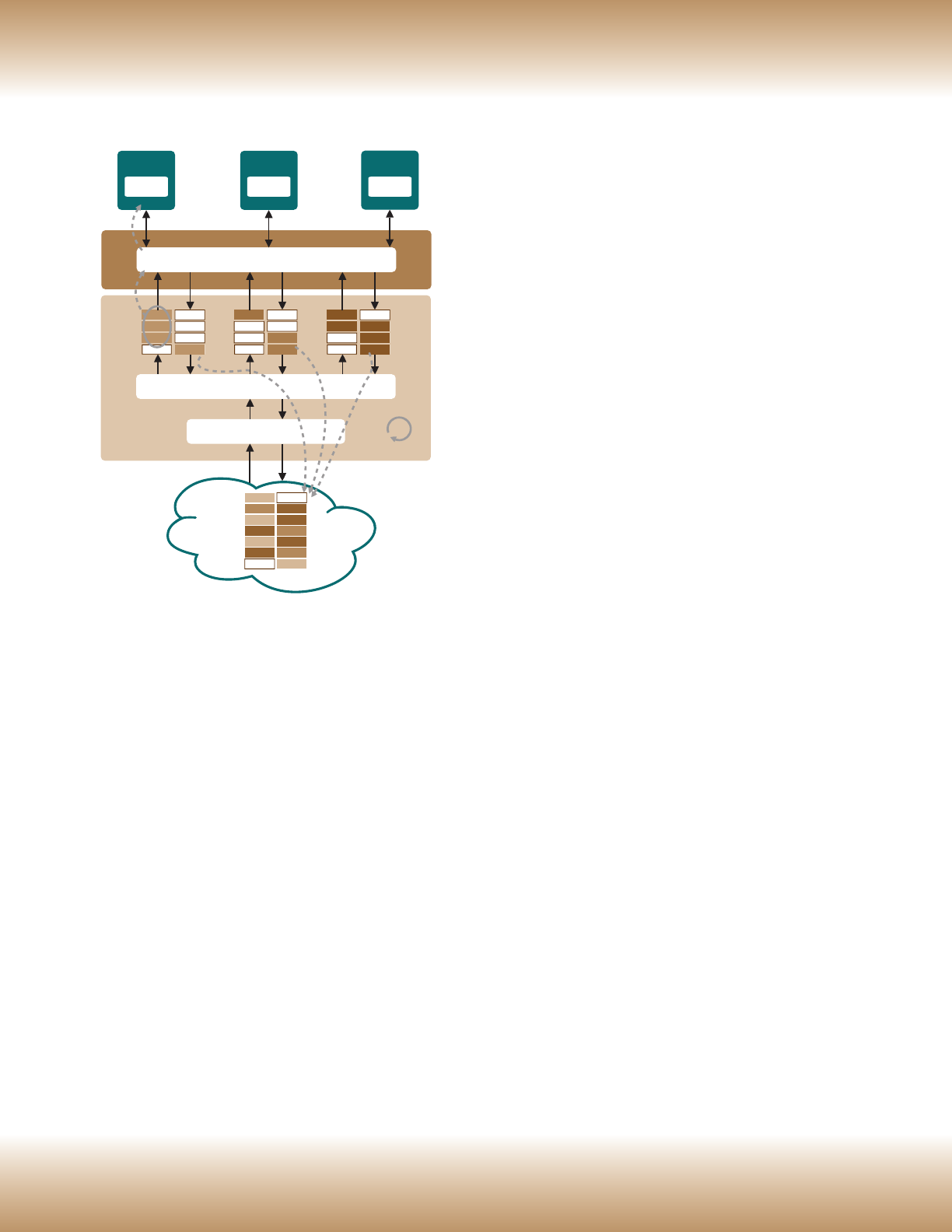New Trends Make 10 Gigabit Ethernet the Data-Center Performance Choice

WHITE PAPER | New Trends Make 10 Gigabit Ethernet the Data-Center Performance Choice
5
for sharing ports and switching data between
multiple VMs. In brief, VMDq provides acceleration
with multiple queues that sort and group packets
for greater server and VM I/O efficiency.
Figure 2 illustrates the key elements of VMDq.
The virtualized server is at the top of the
diagram and has several VMs with an intervening
virtualization software layer that includes a Layer
2 software switch. The server adapter with VMDq
provides the connection between the virtualized
server and the LAN.
On the receive side, VMDq sorts I/O packets into
queues (Rx1, Rx2,… Rxn) for the destination VMs
and sends them in groups to the Layer 2 software
switch. This reduces the number of decisions and
data copies required of the software switch.
VM1
vNIC
VM2
vNIC
VMn
vNIC
Layer 2 Software Switch
MAC/PHY
Adapter
with VMDq
Virtualized Server
Rx1
Rx1
Rx1
Rx2
Tx2
Tx2
Rxn
Rxn
Tx1
Tx3
Tx3
Tx3
LAN
Rx1
Rx2
Rx1
Rxn
Rx1
Rxn
Idle
Idle
Txn
Txn
Tx2
Txn
Tx2
Tx1
Layer 2 Sorter
......
Figure 2. VMDq and Intel
®
10 Gigabit Ethernet Server
Adapters. VMDq provides more efficient I/O in
virtualized servers.
On the transmit side (Tx1, Tx2,... Txn), VMDq
provides round-robin servicing of the transmit
queue. This ensures transmit fairness and prevents
head-of-line blocking. The overall result for both
the receive-side and transmit-side enhancements
is a reduction in CPU usage and better I/O
performance in a virtualized environment.
HIGH-DENSITY COMPUTING
ENVIRONMENTS
The performance multiples offered by multi-core
processors—along with their lower energy and
cooling requirements—make them an increasingly
popular choice for use in high-density computing
environments. Such environments include high-
performance computing (HPC), grid computing,
and blade computer systems. There is also a newly
emerging breed referred to as dense computing,
which consists of a rack-mounted platform with
multiple motherboards sharing resources.
While their architectures differ, high-density
computing environments have many commonalities.
They are almost always power, cooling, and space
critical, which is why multi-core processors are taking
over in this environment. Additionally, their I/O
requirements are quite high today. This is typified by
the blade system shown in Figure 3.
Typical blade systems in the past used Fibre Channel*
for storage connectivity and GbE for network
connectivity. However, blade systems today are
moving to Quad-Core Intel Xeon processor-
based blades with 10GbE connectivity, as shown
in Figure 3. This is supported by the emergence
of universal or virtual fabrics and the migration
of 10GbE from the blade chassis to the blade
architecture. Moreover, instead of costing thousands
of dollars per port, 10GbE in blades is now on the
order of a few hundred dollars per port.
A key reason for the cost reduction of 10GbE in
blades is the fully integrated 10GbE Media Access
Control (MAC) and XAUI ports
3
on the new Intel
®








